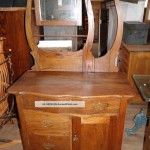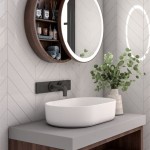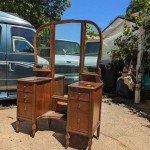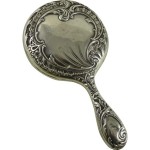Hanging Frameless Mirrors: A Comprehensive Guide
Frameless mirrors offer a sleek, modern aesthetic, enhancing any space with their clean lines and reflective qualities. However, their minimalist design presents unique challenges when it comes to installation. This guide provides a comprehensive overview of the methods and considerations for securely and effectively hanging a frameless mirror.
Before embarking on the installation process, careful planning and preparation are essential. Accurate measurements of the mirror's dimensions are crucial for selecting appropriate hanging hardware and determining optimal placement. The wall material also plays a significant role in determining the best hanging method. Drywall, plaster, concrete, and tile each require specific hardware and installation techniques.
Several hardware options are available for hanging frameless mirrors, each offering varying degrees of support and adjustability. J-channels, also known as J-bars, are a popular choice. These metal brackets are installed on the wall and the mirror slides into the channel, providing secure support along the bottom and sides. This method allows for minor adjustments after installation.
Clips are another common option, providing a more minimalist appearance. These small metal brackets are affixed to the wall and grip the edges of the mirror. While clips offer a cleaner look, they offer less adjustability compared to J-channels. Precise placement during installation is crucial for achieving a level hang.
Adhesive mounting offers a convenient alternative, especially for lighter mirrors. Specialized mirror adhesive provides a strong bond and eliminates the need for visible hardware. However, this method is typically less suitable for larger or heavier mirrors due to the increased risk of slippage or detachment. Careful surface preparation is essential for optimal adhesion.
For heavier mirrors, using a combination of adhesive and clips or J-channels can provide enhanced security and stability. This approach combines the strength of adhesive bonding with the mechanical support of hardware, ensuring a robust and long-lasting installation.
Once the appropriate hardware and method are chosen, the installation process can begin. Marking the desired mirror location on the wall is the first step. Using a level ensures accurate positioning, preventing a tilted appearance. For hardware installations, pilot holes should be drilled according to the manufacturer's instructions. The correct drill bit size and depth are crucial for preventing wall damage and ensuring secure fastening.
When using adhesive, ensure both the wall surface and the back of the mirror are clean and dry. Apply the adhesive according to the manufacturer's recommendations, ensuring even coverage. Carefully position the mirror on the wall, applying firm pressure for the recommended duration to ensure proper bonding.
For J-channels, install the brackets on the wall according to the marked measurements. Once secured, carefully slide the mirror into the channels, ensuring it sits flush against the wall. For clips, attach the brackets to the wall and carefully position the mirror, ensuring the edges are securely gripped by the clips.
Safety should be a paramount concern throughout the installation process. Wearing appropriate safety glasses protects against potential eye injuries from dust or debris. Gloves provide a secure grip and protect hands from sharp edges. When handling heavy mirrors, having assistance is recommended to prevent accidents and ensure proper placement.
Different wall materials require specific considerations during installation. Drywall requires appropriate wall anchors to provide adequate support, particularly for heavier mirrors. For concrete or tile walls, specialized drill bits and anchors are necessary for secure fastening. Plaster walls, often found in older homes, may require additional reinforcement to support the weight of the mirror.
Maintaining the cleanliness of frameless mirrors contributes to their aesthetic appeal. Regular cleaning with a suitable glass cleaner helps remove smudges and fingerprints. Avoid using abrasive cleaners, which can scratch the mirror surface. A soft, lint-free cloth is ideal for cleaning, preventing streaks and residue.
In conclusion, hanging a frameless mirror requires careful planning, appropriate hardware selection, and precise installation techniques. Considering the mirror's size, weight, and the wall material is crucial for selecting the most appropriate hanging method. By following these guidelines, individuals can successfully install their frameless mirrors, enhancing their living spaces with a touch of modern elegance.
Choosing the correct hardware and method for hanging a frameless mirror ensures a secure and aesthetically pleasing installation. Proper preparation and attention to detail contribute to a successful outcome, allowing individuals to enjoy the beauty and functionality of their frameless mirror for years to come.

How To Install A Mirror Without Frame Merrypad

How To Hang A Frameless Mirror On Wall
:strip_icc()/DesireeBurnsInteriors1-f76d25cad90041c88fbae4a7dc10aab4.jpg?strip=all)
2 Simple Ways To Hang A Frameless Mirror

How To Hang A Frameless Mirror On The Wall With Pictures

Jual Cermin Kaca Hanging Mirror Dinding Gantung Fiber Frameless 25x35cm Kota Administrasi Jakarta Timur Mullehwaroeng Tokopedia

How To Hang A Frameless Mirror On The Wall With Pictures

How To Hang A Frameless Mirror June 2024 Your Guide Hanging

How To Hang A Frameless Mirror On Wall E Architect

How To Install A Mirror Without Frame Merrypad

Frameless Round Hanging Wall Mirror With Antique Glass And Geometric Style Antiqued








